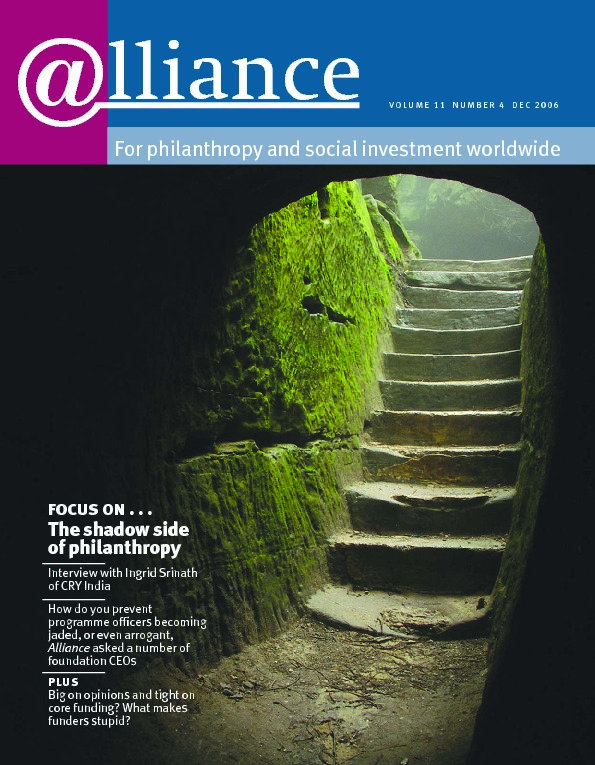I read with interest Andrew Milner’s account of his conversations with foundation investment advisers in your September edition. Pressure from stakeholders usually drives changes in the investment strategies of financial institutions, but private foundations face little or no pressure to maximize returns for their beneficiaries.
Given this freedom, their management is remarkably uninspired. In both the US and the UK, their investment policies follow the time-worn rule: make sure your investments return enough to meet minimum payout requirements and leave a corpus that preserves the inflation-adjusted financial value in perpetuity. In practice, virtually all foundations have overshot their targets and enjoy inflation-adjusted endowments that far exceed their original values.
For years, foundations have followed, directly or indirectly, the advice of investment advisers such as those interviewed. The upshot is that this small group has become the ultimate gatekeeper. They are the principal educators of their clients on their investment options, proactively educating them on every currently fashionable investment concept (hedge funds, portable alpha, etc) – except mission-related investing (MRI). That suggests that they are not ‘neutral’ about it but instead communicate, by their silence, that it is not a subject worthy of serious consideration. If they do not advise their clients on MRI opportunities, it is unlikely that many will pursue them.
At the F B Heron Foundation, we believe that the assets of the foundation can and should be deployed to promote the foundation’s social mission. Approximately 25 per cent of the endowment is so deployed, and we hope to significantly increase that over the next five years. We believe that the social utility of the foundation will be significantly enhanced by this strategy and that the corpus will retain its inflation-adjusted value over time.
Mr Milner’s article suggests that those who think foundations must be more active in making their endowments serve their mission have a lot of persuading to do. However, I was gratified by two of his findings. First, all three advisers believe that an MRI mandate does not necessarily detract from financial performance. Although our experience at Heron amply supports this, most of the advisers’ clients do not believe it and certainly don’t realize that their gatekeepers do.
Second, the advisers recognize that social investment is not a separate asset class, and that opportunities exist across asset classes. That has certainly been our view, but again one to which most foundation clients have not been exposed. Ironically, when we look at the list of institutions that have joined Heron on its mission-related investments, we find the names of several of the most established non-foundation institutional investors.
We urge the investment advisers to learn about the full range of mission-related investments so that they can fully inform foundation clients about them. In doing so, they will be following strategies that are pursued by several of the most creative and return-sensitive investors in both the US and the UK.
Buzz Schmidt
President of GuideStar International; Trustee, F B Heron Foundation
Note On 17 October F B Heron Foundation received the award for excellence in non-profit investing (small non-profit category) from Institutional Investor’s Foundation and Endowment Money Management publication.





Comments (0)